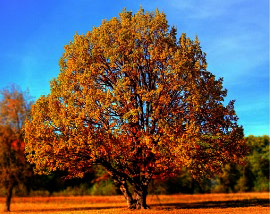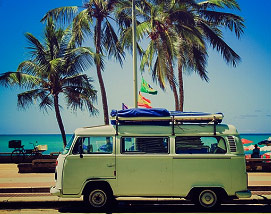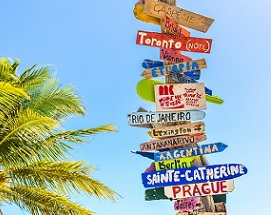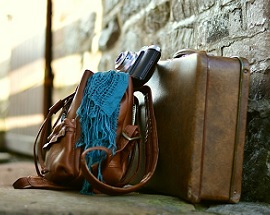If holiday destinations were a painting then whites, blues and greens would be the dominating colours on Sikkim’s canvas. This land of breath-taking natural beauty and a rich cultural heritage is paradise. The lushness of its landscape is well complemented by its warm-hearted people who welcome you to share in their culture and customs.
The exuberance of the residents comes shining to the fore during one of their many colourful festivals. Sikkim promises you a vibrant holiday experience which it delivers with an abundance of things to do and places to visit. Here, spirituality makes its presence felt around every corner. It is easily accessible and deeply revered.
Experience a deep sense of peace at the many monasteries that dot the landscape like carelessly strewn prayer beads. Join the locals in celebrating their festivals and feel your nervousness melt away as you become a part of the celebrations.
Get a taste of Sikkim’s rich culinary heritage that is beautifully presented in many avatars throughout the land. Sikkim tourism is an adventure that begins with a bang and never ends. Once you have stepped onto the Sikkimese soil, you will yearn to come back one more time. There, amidst the soaring mountains, you can almost reach out and touch the sky.
Sikkim Geography
Sikkim is spread out at the base of Mt. Kanchendzonga (Kanjenjunga) in the Eastern Himalayas. The third-highest mountain in the word is highly revered by the Sikkimese as their guardian deity. Sikkim shares its borders with Nepal in the west, Tibet in the northeast and Bhutan in the southeast. Barely the size of Switzerland, it is home to many mighty peaks of the Himalayas.
The tall mountains are contrasted by the deep valleys that support thriving ecosystems of indigenous flora and fauna. Sikkim is home to almost every species of the Rhododendron. The diversity of the flora is fuelled by giant magnolia trees, conifers and beautiful flowering plants like Blue poppies, Gentians, Primulas, Wild strawberry and Raspberry.
Sikkim’s wilderness includes the elusive Snow Leopard, Yaks, Thar, Wild Ass, Blue Sheep, Shapi and the endangered Red Panda.
Sikkim’s snowline is fixed at 6,000 m. Above this line, there’s a permanent cover of snow throughout the year. Even at these high altitudes Sikkim has a multitude of water bodies like the Rangeet and Teesta rivers, and lakes like Tsomgo, Khecheopairi, Menmencho and Karthok. Sikkim’s west side is flanked by the massive 31-kilometre-long Zemu glacier. All of these are a big part of Sikkim tourism.
Sikkim Climate
Though Sikkim experiences distinct summer, monsoon and winter seasons, it is mostly cold and humid almost all through the year. Even with the heavy snowfall in winter, temperatures rarely drop below 0°. They hover between 5° to 7° C. If you’re travelling to Sikkim in winter, do not forget to carry your best woollens.
Summer temperatures stay between 5° and 25° C. Though it is pleasant during the day, the nights and early mornings can get quite chilly. This is the best time for Sikkim tourism as the days are longer and most of the state is easily accessible. It is best to dress in layers in order to adjust to the wide range of temperature fluctuations.
During monsoon the average maximum temperature drops to 15° C. July is the wettest month. Southern Sikkim receives more rainfall than the northern areas. The rivers, lakes and waterfalls really come alive. The forests around the lakes teem with wildlife. For bird-watching enthusiasts this is the best time to visit Sikkim. But the heavy rains make the roads dangerous and impassable.
Sikkim Culture
Sikkim is predominantly Buddhist and is made up of three ethnic groups - Lepcha, Bhutia and Nepali. Besides the Buddhist monasteries, you will also find temples, churches, mosques and gurudwaras in Sikkim. In fact, the Solophok Chardham in Namchi is known for its replicas of the twelve jyotirlingas and the four char dhams.
A rich melting pot of diverse cultures that coexist harmoniously has enabled Sikkim to retain its unique cultural identity for centuries. Nepali is the most widely-spoken language in Sikkim. All the festivals are celebrated with equal fervour and devotion. The communities come together to celebrate and honour the age-old traditions.
The cultural influences can also be seen in Sikkim’s culinary diversity. Sikkimese cuisine is one of the main draws of Sikkim tourism.
Sikkim Tourism
Sikkim tourism is a harmonious blend of natural beauty, spiritualism and adventure. Due to its close proximity to international borders, you may need a permit to visit certain attractions near the border areas. If you’re seeking updated information on Sikkim’s tourist attractions, you can approach any one of the Sikkim Tourist Information Centres in Namchi, Melli, Pelling, Rangpo and Mangan.
While some may come here for spiritual pursuits and others for the thrills, Sikkim will welcome all with the same warmth and enthusiasm.










